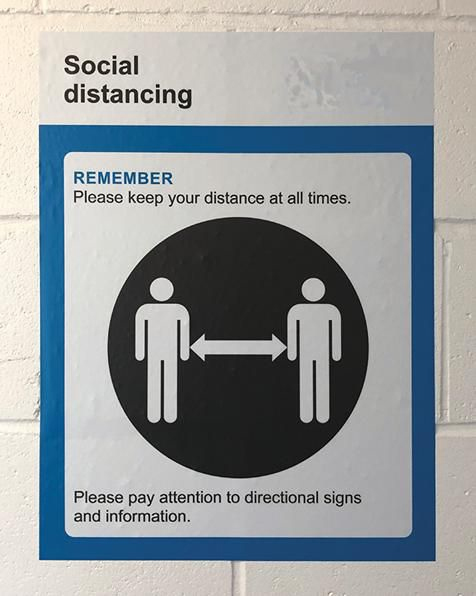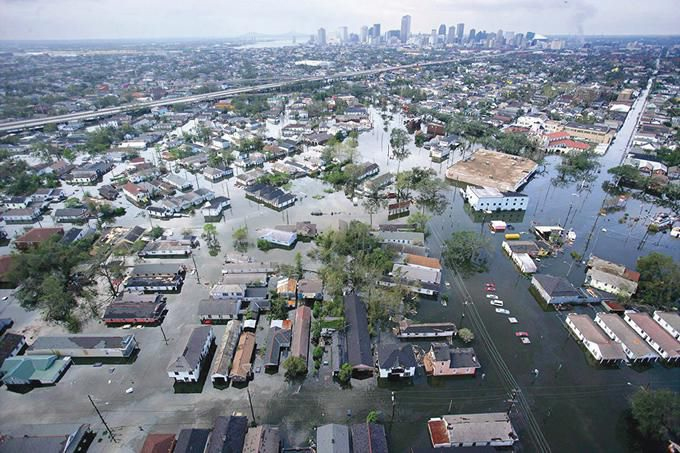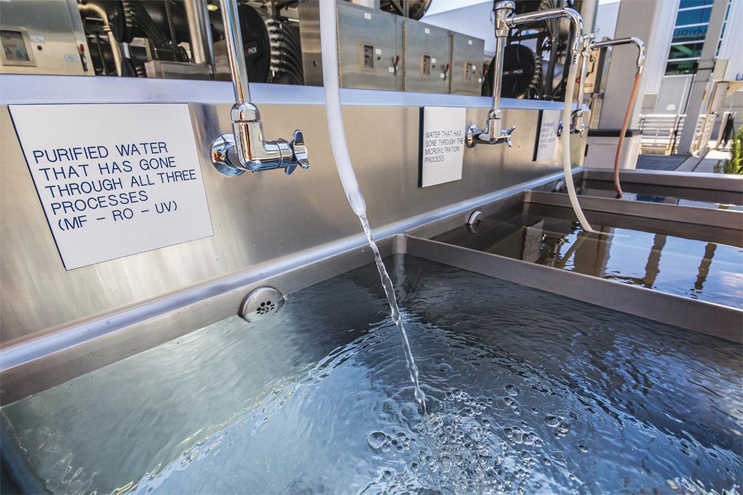Can't Pay, Won't Pay: COVID-19's Implications For Water Utility Funding
By Ann Bui
Water and wastewater utilities that were already financially strapped before the pandemic have seen a decrease in revenue because of it. How can these utilities adapt and survive, or even thrive, in the shadow of COVID-19?
The U.S. has a water affordability challenge that cuts many ways. Utilities need to raise more money to ensure they can continue to provide customers with safe, reliable water and wastewater services. Customers, however, are often unwilling — and sometimes unable — to pay higher rates; and elected officials overseeing rate settings are similarly reluctant to see rates go up. And then came COVID-19.
The Case For A Rate Rise
Treating water and delivering it to domestic and industrial customers is asset intensive. Many of these assets are reaching, or have passed, the end of their operating life. They have not been replaced because rate increases have historically, and remain, insufficient to fund the capital investment necessary; and federal funding for water systems has fallen by 77 percent in real terms since its peak in 1977.
Nearly 80 percent of the water, wastewater, and stormwater professionals who took part in Black & Veatch’s 2020 Strategic Directions: Water Report survey cited aging infrastructure as their most challenging issue.
Utah State University researchers who examined some 200 water utilities in the U.S. and Canada in 2018 found 16 percent of mains were beyond their useful lives. Six years earlier, only 8 percent of mains had reached their end-of-life. The growing age of mains resulted in a 27 percent increase in ruptures during the six years between the two studies. The American Water Works Association (AWWA) and the American Society of Civil Engineers (ASCE) estimate 240,000 main breaks occur annually.
Leakage increases utilities’ expenditures directly and indirectly. Leaks are costly to locate and repair. Treatment costs rise as the volume of water processed is increased to replace the water lost through leaks. Leakage can also lead to pressure loss — which means pumping systems must consume more power, thus increasing energy bills — to maintain the required level of pressure.
In consequence, aging infrastructure burdens utilities not just with the cost of replacing assets, but also with higher operating and maintenance costs. As extreme weather events grow in frequency, utilities also face the cost of enhancing assets’ resilience — or an increased risk of service failures. In addition, they must meet the cost of expanding the asset base to meet the ever-increasing customer demand. All of these costs are reflected in the pressure to raise rates.
The Case Against A Rate Rise
Comparatively, Americans do not pay high water bills. As a percentage of household income, U.S. households pay less for water and wastewater than other developed countries, according to the U.S. EPA.
There is, the EPA has observed, a perception that water is readily available and provision of water services is generally inexpensive. So, contributing to an unwillingness to have rates that approach the true cost of providing and maintaining water services is the sense that customers do not understand fully what they are paying for.
There is, the EPA has observed, a perception that water is readily available and provision of water services is generally inexpensive.
This is borne out by Black & Veatch’s 2020 Strategic Directions: Water Report, with one-third of respondents saying their customers probably do not understand what it takes to supply them with clean, potable water, as well as wastewater and stormwater services. Also, one in five respondents felt that their customers do not have the baseline knowledge about the service they receive.
Another significant factor is that funding necessary for infrastructure upgrades may be influenced by city councils, boards, or other civic overseers who may decide rate increases through the prism of election cycles. The political desire to keep bills down makes water about the only commodity for which complaining about the cost may potentially have a significant impact.

The harm being wrought by COVID-19 does not discriminate between utility and customer.
Although keeping rates low may well be, in part, about electability, there is also the issue of affordability. There remains a need to ensure low-income households have access to water services.
Analysis of 12 U.S. cities undertaken by Guardian Media Group found that the combined price of water and sewage services increased by an average of 80 percent between 2010 and 2018, with more than two-fifths of residents in some cities living in neighborhoods with unaffordable bills. As many as one in 20 homes are disconnected for unpaid bills annually, according to a 2018 report by Food & Water Watch.
In addition, utilities’ attitudes to what constitutes affordability vary. The 2020 Strategic Directions: Water Report found 67.4 percent of respondents felt affordability meant charging enough to serve customers and make improvements; 23.9 percent said affordability was providing a basic level of water at an affordable price to all customers; while 4.3 percent felt affordability meant keeping rates as low as possible.
The EPA has proposed that the pricing of water services should accurately reflect the true costs of providing high-quality water and wastewater services to consumers to maintain infrastructure and plan for upcoming repairs, rehabilitation, and replacement of that infrastructure. AWWA and the World Economic Forum also support the full-cost pricing of water and wastewater services.
And Then Came COVID-19
The harm being wrought by COVID-19 does not discriminate between utility and customer. Utilities already struggling to fund much-needed capital investments are losing revenue as commercial and industrial enterprises — water utilities’ biggest volume consumers — suspend operations.
In addition, tens of millions of U.S. workers are being laid off during the outbreak, rendering many unable to pay their water bills. Around the country, however, water providers have not only suspended water and wastewater shutoffs to delinquent accounts but also reconnected those previously shut off. The shutoff moratorium is both in the interest of humanity and an affirmation of the importance of water and sanitation in trying to contain the virus.
An assessment commissioned by AWWA and the Association of Metropolitan Water Agencies, in April 2020, indicated an aggregate financial impact of COVID‐19 on drinking water utilities of approximately $13.9 billion, representing an overall 16.9 percent financial toll. Wastewater utilities were expected to lose an estimated $16.8 billion in revenues, along with the costs of maintaining sewer access.

As extreme weather events grow in frequency, utilities face the cost of enhancing assets’ resilience.
The National Association of Clean Water Agencies (NACWA) warned that without taxpayer help to the industry the revenue loss from forgiving customer debts and providing services without payment during the pandemic ultimately would be passed on to water customers in subsequent years and lead to future rate increases. In contrast, many expect significant pressures to further defer rate increases until the economy recovers and the millions of jobs are returned.
Bridging The Funding Gap
Utilities have a number of options to bridge the funding gap. Taking the view that some money is better than none, some larger utilities may extend payment plan terms. Other standard financial instruments available include drawing upon reserves, seeking short-term credit, and refinancing existing debt.
On the regulatory side, we may see surcharges, with a sunset clause, for the recovery of COVID-19-related cost. There is the potential to seek federal government support, but that will not generate immediate income. Significant federal investment in water infrastructure during the 1970s may lead to the belief that something similar may, or should, happen again. But this seems unlikely. Even extending current support, which accounts for about one-third of utilities’ funding, is not anticipated widely within the industry.
Customers’ ability to pay could be supported by the provision of something akin to the energy sector’s Low-Income Home Energy Assistance Program to water. Increased grants and funding in other areas of a customer’s life may help ease the overall burden on the household and thus help with delinquent water payments. Besides, addressing affordable water may mean that political bodies need to recognize there is a greater good in serving struggling customers, and therefore the costs of water services could be shared across the customer base.

The increasing sophistication required to treat water has an impact on the cost.
What Good Will Come Of This?
Without dismissing the extreme pressures water utilities have coped with during the pandemic, the fact that they have continued to serve their customers should be a cause of some pride.
Keeping the faucets running under such duress has enabled utilities to see with greater clarity which activities are crucial to maintaining services. These insights should help enhance the targeting of limited capital budgets on the things that will reap the greatest benefits. By soliciting a focus on core activities, the experience should also foster an understanding of the best ways in which to improve effectiveness, and what needs to be done better.
Rising to the COVID-19 challenge enabled utilities to reassess some of their basic perceptions. For instance, it has been possible to successfully deliver functions such as customer services remotely, without the need for a call center. Similarly, although it has been far from easy, utilities have shown that it is possible to manage and deliver engineering functions and plant shifts remotely — not an idea that gained much traction previously.
Against a backdrop of a skills shortage and aging workforce, by proving their ability to work in more flexible ways, utilities will potentially be more appealing to younger generations of workers more accustomed to working in a more diffuse organization.
So, while funding and affordability challenges are likely to continue, the post-COVID-19 utilities that will have to deal with them are probably more resilient and adaptable organizations than previously, and stronger as a result.
About The Author
 Ann T. Bui is a managing director and leads Black & Veatch Management Consulting’s water market business. Besides providing clients with strategic financial management strategies, her responsibilities include driving growth and innovation to water utilities in the areas of financial and advisory planning, advanced metering, customer experience, asset integrity, and enterprise risk management services. Bui has over 30 years of experience working with utilities on more than 400 engagements and has provided financial and business planning services for public and investor-owned utilities across the U.S. of all different sizes, ranging from those with less than 5,000 service connections to those that serve populations over 3 million.
Ann T. Bui is a managing director and leads Black & Veatch Management Consulting’s water market business. Besides providing clients with strategic financial management strategies, her responsibilities include driving growth and innovation to water utilities in the areas of financial and advisory planning, advanced metering, customer experience, asset integrity, and enterprise risk management services. Bui has over 30 years of experience working with utilities on more than 400 engagements and has provided financial and business planning services for public and investor-owned utilities across the U.S. of all different sizes, ranging from those with less than 5,000 service connections to those that serve populations over 3 million.
